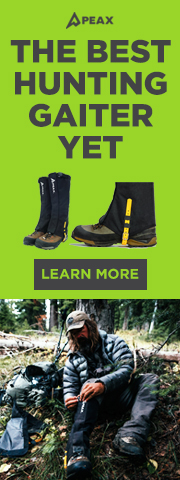The question is not to hunt them or not ... though I know that\'s a commonly debated subject.
The question is how to find them.
\"North slopes\" ... \"Benches\" ... \"Benches on north-facing slopes\" ... \"2/3 the way up the \'mountain\'\" ... and ... \"On a north-facing slope bench 2/3 the way up the mountain\" are common answers.
Yet, I don\'t find them all that helpful.
Why? Because they encompass large (sometimes very large) areas ... so large that I\'m not sure how to use the information.
Pete (StillHunter) ... I know you know more about how to narrow down my search.
It just seems to me that there are a LOT of areas that would make an acceptable spot to lie down for the afternoon. But do elk really have defined bedding \"spots\" (\"areas\" may be too large) that one can outline on a map, and count on year-to-year?
The question is how to find them.
\"North slopes\" ... \"Benches\" ... \"Benches on north-facing slopes\" ... \"2/3 the way up the \'mountain\'\" ... and ... \"On a north-facing slope bench 2/3 the way up the mountain\" are common answers.
Yet, I don\'t find them all that helpful.
Why? Because they encompass large (sometimes very large) areas ... so large that I\'m not sure how to use the information.
Pete (StillHunter) ... I know you know more about how to narrow down my search.
It just seems to me that there are a LOT of areas that would make an acceptable spot to lie down for the afternoon. But do elk really have defined bedding \"spots\" (\"areas\" may be too large) that one can outline on a map, and count on year-to-year?






